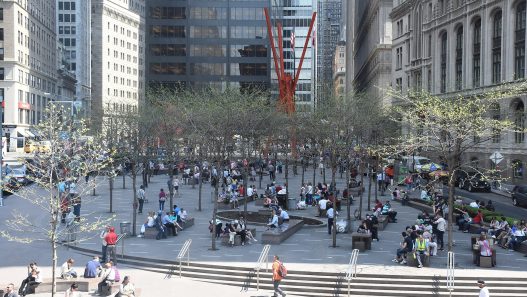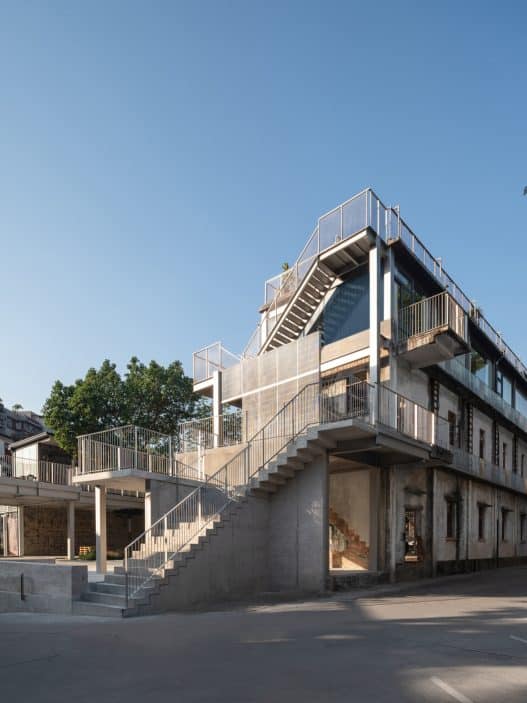The transition from architecture school to professional practice is often described as entering a new universe. While classrooms and studios prepare students with technical skills and creative frameworks, the emotional landscape of real-world practice remains uncharted territory. While this transition can be exciting, it also brings with it vulnerability, self-questioning, and the need to adapt to unforeseen challenges. Understanding these emotional realities is not just about survival; it’s about thriving in a field where creativity and pragmatism must coexist.

Coping with Impostor Syndrome and Self-Doubt
Imagine standing on a construction site, plans in hand, as a contractor asks you to justify a design decision. The confidence you felt during studio critiques suddenly evaporates. Imposter syndrome—the nagging belief that you are unqualified despite the evidence proving your competence—is a common companion for early-career architects. It often stems from comparing oneself to experienced professionals or from fears that academic achievements will not translate into real-world expertise.
The key to overcoming this is,everyone'sis to accept that you started somewhere. The gap between theoretical knowledge and practical application is not a personal failing; it is a natural part of growth. For example, a junior architect in a firm may be reluctant to voice his or her ideas in meetings for fear of being perceived as “unrealistic.” However, experienced colleagues often value new perspectives, even if those perspectives require refinement.
Real-world applications include firms that foster “no stupid questions” cultures, where mentoring programs normalize the learning curve. Consider the case of Maria, a recent graduate who felt out of place during her initial project review. By openly discussing her doubts with a senior designer, she learned that the innovative material proposal she initially dismissed was later integrated into the project’s sustainability strategy.
Managing the Shock of Real-World Expectations
In school, a project may be judged solely on creativity. In practice, creativity must coexist with budgets, zoning laws, and client demands. The shock of these constraints can feel like a creative straitjacket. For example, a graduate might spend weeks designing a facade with complex geometries, only to have it simplified due to cost or engineering constraints.
This shift requires redefining success. Real-world architecture is not about an uncompromising vision, but about balancing ideals with feasibility. Consider Amir, who joins a firm specializing in residential renovations. His first assignment—remodeling a kitchen—seemed mundane compared to his thesis on futuristic urban centers. Over time, he realized that small-scale projects taught him negotiation skills and client communication, which would prove invaluable in larger commissions later on.
The key is to reframe constraints as creative catalysts. A budget cap can inspire creative material reuse, while a strict timeline can streamline decision-making. Firms like Studio Gang exemplify this by turning site-specific challenges, like Chicago’s harsh winters, into drivers of innovative, climate-responsive design.
Overcoming the Emotional Rollercoaster of Early Failures
Early-career failures—a rejected bid, a miscommunication with a contractor, or a design flaw during construction—can feel like a disaster. Yet these moments are often the best teachers. The emotional toll is real, but resilience is built when failures are viewed as stepping stones rather than dead ends.
Take the story of Luis, who designed a community center with a dramatic cantilevered roof. During construction, engineers flagged structural risks, forcing a last-minute redesign. Although initially devastated, Luis collaborated with the team to develop a hybrid wood-and-steel solution that became the defining feature of the project. This experience taught him the importance of iterative design and interdisciplinary collaboration.
Embracing failure requires a shift in mindset. Firms like BIG (Bjarke Ingels Group) embrace a “fail fast, learn faster” philosophy, encouraging rapid prototyping and testing ideas in low-risk environments. For young architects, this might mean providing clients with multiple conceptual sketches early on, reducing the pressure to deliver a “perfect” solution on the first try.
Learning to Embrace Uncertainty and Constant Change
Architecture is a field that is constantly on the move. Codes evolve, technologies advance, and client needs change mid-project. For those accustomed to the structured terms of school, this fluidity can be disorienting. Yet adaptability is a superpower in practice.
Consider the rise of sustainable design. A decade ago, net-zero buildings were a niche field; today, they’re a global priority. Architects who once specialized in traditional methods now collaborate with climate scientists and data analysts. Recent graduate Ana found herself learning carbon-tracking software on the job—a tool that had never been on her curriculum. Instead of resisting, she embraced the uncertainty, took workshops, and eventually led her firm’s sustainability initiatives.
The ability to pivot is strengthened by practices like participatory design, where community feedback iteratively shapes projects. For example, during a housing project in Rotterdam, architects changed layouts multiple times based on residents’ input, embracing change as a path toward inclusivity.
Finding Resilience Through Peer and Mentor Support
The journey from academia to practice is smoother when shared with empathetic colleagues and mentors who illuminate the path. Informal coffee chats, firm-wide critiques, or industry groups like the AIA (American Institute of Architects) create ecosystems of support.
Mentoring turns abstract challenges into manageable lessons. When Sofia struggled with client conflicts, her mentor shared a simple yet profound insight: “Listen first, design later.” By prioritizing client narratives over immediate solutions, Sofia built trust and uncovered the hidden needs that shaped her designs.
Peer networks also serve as sounding boards. After long days, Julia and her colleagues formed a “commitment and brainstorming” group where they shared stories and strategies. These meetings normalized common struggles, turning isolation into collective problem-solving.
At firms like Foster + Partners, mentoring is structured as part of career development, with juniors paired with seniors for ongoing guidance. Such systems remind young architects that asking for help is not a sign of weakness, but that this is how the profession evolves.
The transition from school to practice is less about erasing doubts than it is about overcoming them with curiosity and community. Every emotional challenge, whether it’s self-doubt, failure, or uncertainty, carries the seeds of growth. By embracing these truths, architects not only build structures; they build the flexibility and adaptability that define enduring careers. The important thing is to keep designing, not just on paper, but in the way we approach our evolving selves.
Practical Challenges Facing New Graduates
Architecture graduates who enter the professional world quickly discover that the challenges they face extend far beyond drafting tables and design software. The transition from academia to practice is a process where theoretical knowledge meets the messy and unpredictable realities of construction, and idealism and pragmatism collide. From mastering unfamiliar tools to deciphering the unspoken rules of the firm’s culture, new architects must learn to navigate a maze of demands and prove their worth in often high-pressure environments.
Bridging the Gap Between Academic Theory and Practical Skills
In school, a student might design a museum with sweeping curves and dramatic atriums that’s celebrated for its conceptual boldness. In practice, the same graduate might be tasked with detailing a bathroom layout or calculating the load-bearing capacity of a beam. The gap between grand visions and detailed execution can be jarring. While academic projects often prioritize innovation, professional work demands precision, feasibility, and an understanding of how materials behave in the real world.
This disconnect is evident in moments like Eva’s first site visit. Fresh out of school, she was confident in her ability to design a sustainable office complex. But when a contractor asked her to specify the exact type of insulation for a cavity wall, she froze. Class discussions about passive design had not addressed manufacturer catalogs or thermal bridges. Bridging this gap requires humility and a willingness to learn from those with experience in the field.
Forward-thinking firms are addressing this issue by pairing graduates with construction managers or holding workshops on material properties. At Snøhetta, for example, young architects often shadow engineers in the early stages of projects to turn abstract concepts into buildable details. Over time, these experiences turn theoretical knowledge into actionable wisdom.
Software Competence and Overcoming Technological Barriers
Architecture schools teach software, but rarely in the way firms use it. A student may master Rhino for sculptural forms but stumble when asked to create construction documents in Revit. Or they may excel at creating sunlight-lit landscapes in V-Ray but lack experience with clash detection tools like Navisworks. The pressure to deliver error-free models under tight deadlines can overwhelm even the most tech-savvy graduate.
Consider Raj, who joined a firm specializing in high-rise construction. His academic portfolio included parametric design, but his first assignment—updating a BIM model for a hospital—required meticulous layer management and coordination with MEP engineers. He spent his nights relearning Revit shortcuts and deciphering the firm’s file-naming protocols. The frustration was real, but so was the reward: within months, he had become the go-to guy for streamlining BIM workflows.
The key is to view software as a living toolkit, not a static skill. Firms like Zaha Hadid Architects are investing in ongoing technology education, recognizing that tools evolve as quickly as design trends. Platforms like LinkedIn Learning or Autodesk’s certification programs also help graduates fill in the gaps independently.
Understanding Construction Details and Building Codes on the Job
A student’s floating glass staircase design may win praise in a studio review, but in practice that same staircase must comply with fire safety regulations, accessibility standards and structural limits. Building codes are an invisible framework that shapes every decision, yet they are rarely taught comprehensively in schools.
When Leah designed her first mixed-use project, she didn’t realize that the open-plan retail space violated local exit requirements. The project manager flagged the problem during an inspection, and Leah spent days reworking the layouts to meet code—a crash course in humility. Over time, she learned to anticipate regulations by studying jurisdictional manuals and collaborating with code consultants.
In the real world, learning often comes through trial and error. Companies like Gensler are integrating code compliance into the early design stages, using checklists and digital tools like UpCodes to flag potential issues. The lesson for graduates is clear: Beautiful design is useless if it can’t be legally built.
Adapting to a Company's Fast-Paced Working Environment
In school, a project might span a semester; in practice, deadlines are measured in days or hours. As new graduates adapt to the rhythm of a firm, they must juggle multiple tasks—revising drawings, responding to client emails, attending site meetings. The shift from the reflective pace of studio work to the reactive demands of practice can trigger burnout.
Carlos learned this the hard way. At his first job, he was given three simultaneous projects: a coffee shop renovation, a zoning analysis for a developer, and a competition application. At first, he approached each with the same care he would his thesis. But when missed deadlines drew criticism, he realized that efficiency was as important as perfection. He started using time-blocking techniques and prioritizing tasks by urgency—a skill no studio had taught him.
Progressive firms alleviate this pressure by gradually increasing workloads and encouraging open communication. Mentors can advise graduates to divide tasks into “quick wins” (e.g., drafting a client memo) and “deep work” (e.g., refining a design schematic) and to balance productivity with creativity.
Transition from Studio Projects to Customer-Focused Work
In school, the client is often an abstract entity—a professor or a hypothetical user. In practice, clients have strong opinions, changing priorities, and budgets that dictate design choices. Learning to navigate these dynamics is an art.
Maya’s wake-up call came during her first client presentation. She had spent weeks perfecting a concept for a lakeside retreat, but the client rejected it as “too modern.” Instead of defending her vision, the project manager encouraged her to ask questions: What memories did the client associate with lakes? What materials felt “warm” to them? Through dialogue, Maya navigated a design that blended rustic wood with contemporary lines, and came to a compromise that pleased both parties.
Successful client relationships are based on empathy and communication. Firms like Olson Kundig train their staff in active listening techniques so that designs reflect client narratives rather than architectural egos. Graduates learn that a client’s pushback is not a rejection of creativity but a call for collaboration.
The practical challenges of early-career architecture are not roadblocks, but rites of passage. Whether it’s deciphering building codes or appeasing a skeptical client, each obstacle builds the muscle memory needed for long-term success. The transition from academia is less about abandoning idealism than grounding it in reality. By embracing these challenges as opportunities for growth, new grads not only survive the professional world, but reshape it one detail, one deadline, one conversation at a time.
Early Career Development and Professional Growth
The early years of an architecture career are a crucible of rapid learning, adaptation, and self-discovery. While the excitement of landing a job or internship is undeniable, the path to professional development is rarely linear. Early-career architects must navigate a maze of competing priorities: developing technical skills, nurturing relationships, and maintaining their creative spark while meeting the demands of clients and firms. This phase is not just about climbing a ladder; it’s about building a foundation that’s resilient enough to support a lifetime of evolving aspirations.
Seek Mentorship and Learn from Experienced Professionals
Mentorship is a compass that guides many young architects through uncharted professional terrain. Unlike professors in school, mentors in practice offer insights built from years of navigating budgets, client conflicts, and job site surprises. Their wisdom is found not in textbooks but in stories of triumphs and missteps.
Javier, who joined a midsize firm, felt overwhelmed by the complexity of healthcare projects. His mentor, a senior architect with two decades of experience, not only explained infection control protocols but also shared how to advocate for design integrity during value engineering sessions. During coffee breaks and site visits, Javier learned to read between the lines of client feedback and anticipate regulatory hurdles.
Effective mentoring thrives in environments where curiosity is rewarded. Firms like Perkins & Will formalize this through “buddy systems,” pairing juniors with seniors for structured mentoring. But mentoring can also arise organically—asking a project leader for feedback on a detail drawing or volunteering to help a colleague with a complex permit application. The key is to approach relationships with humility and a hunger for learning.
Networking in a Competitive Industry
In architecture, who you know often shapes what you build. Networking isn’t about transactional exchanges at cocktail parties; it’s about developing genuine connections based on shared curiosity. For introverts or those new to a city, this can feel intimidating. Yet every interaction—whether at a conference, a community design charrette, or even a LinkedIn comment thread—holds potential.
Consider Priya, who landed her dream job at a conservation studio not through a job board but through a professor’s referral. During graduate school, she volunteered at a local conservation nonprofit and later connected with a board member who referred her for an opening. Her story underscores that networks are not built overnight but are fueled by consistent engagement and a willingness to contribute.
Young architects can start small. Joining groups like the Architecture Lobby or attending AIA chapter meetings creates opportunities to meet colleagues facing similar struggles. Online platforms like Dezeen’s forums or Instagram communities (e.g. @archidaily) foster global dialogue. The goal is not to collect business cards, but to build relationships where knowledge and opportunities flow both ways.
Embracing Lifelong Learning and Professional Development
Architecture is a discipline where stagnation is a career risk. Regulations change, materials are renewed, and sustainability standards evolve every year. The most successful architects continue their education, acquiring certifications, workshops, and even interdisciplinary skills.
When Kai, a young designer, noticed his firm’s increasing focus on biophilic design, he enrolled in an online course in ecological psychology. His newfound understanding of human-nature connections not only enriched his projects, but also positioned him as a go-to resource for clients interested in wellness-focused spaces. Similarly, firms like SOM recognize that developing skills benefits both the individual and the practice by offering scholarships to employees who pursue LEED accreditation or parametric design training.
Lifelong learning means staying curious beyond architecture. A photography degree can sharpen one’s eye for composition, while a public speaking class can change the way a young architect presents his or her ideas. The lesson is clear: Growth happens when you step outside your comfort zone.
Balancing Customer and Company Demands with Creative Vision
Every architect struggles with a tension: How much of my personal design sense should I sacrifice to please a client or fit a firm’s style? Early-career professionals often fear that compromise means selling out. But the truth is, most projects are driven by collaboration, not lone genius.
Lena’s breakthrough came during a boutique hotel project. The client insisted on a traditional aesthetic that clashed with her minimalist approach. Instead, she proposed subtle innovations: hidden LED lighting in the crown moldings, modular furniture that blended period charm with modern functionality. The client loved the fusion, and Lena discovered that restrictions can enhance creativity rather than stifle it.
Firms like Diller Scofidio + Renfro strike this balance beautifully, pairing avant-garde concepts with rigorous problem-solving methods. The challenge for young architects is to defend their ideas while remaining open to reinvention. This dance requires emotional intelligence—knowing when to stand firm on a design principle and when to conform.
Using Internships and Entry-Level Roles as Stepping Stones
Internships are often seen as “grunt work” stages—printing drawings, editing material samples, or proofreading documents—yet these roles are fertile ground for observation and relationship building. The difference between stagnation and growth lies in proactive participation.
While interning at a small urban design firm, Diego made it a habit to arrive early to review project files before others arrived. He noticed recurring issues with accessibility compliance on site plans and taught himself ADA standards using free online resources. When he flagged a potential violation during a team meeting, his initiative led to a promotion to associate accessibility consultant for the firm.
Entry-level roles also offer the chance to explore niches. A budding draftsman might discover a passion for historic preservation while documenting a renovation, while an intern working on a hospitality project might fall in love with lighting design. The key is to view each task, no matter how mundane, as a window into the profession’s vast possibilities.
Early career development in architecture is about developing a mindset rather than a destination. It’s about seeing mentors as collaborators, networks as communities, and challenges as invitations to innovation. The architects who succeed are those who remain students at heart—curious, adaptable, and unafraid to reframe their own professional plans. Success is measured not by the speed of promotions, but by the depth of one’s development, the strength of one’s relationships, and the quiet satisfaction of seeing a blueprint transform into a place that shapes lives. The most enduring structures in this field are not simply made of steel and glass; they are built with resilience, curiosity, and the courage to continue learning.
Lessons Learned from Successes and Setbacks
Growth in architecture is not a straight line, but a series of peaks and valleys. Successes validate skills, while setbacks reveal blind spots. Together, they create a curriculum more powerful than any textbook, teaching young architects how to deal with uncertainty, hone their craft, and trust their instincts. This is where idealism meets reality and resilience is built.
Celebrating Small Wins and Early Project Successes
It’s easy to dismiss these moments as insignificant when a client first approves of a design detail you sketched on a napkin or a contractor compliments your clarity on a set of drawings. But in a profession where projects take years to complete, small wins are the fuel that keeps the momentum going. Early-career architects often overlook these victories, focused on bigger goals like seeing their name on a building’s facade.
Consider Sam, a recent graduate working on a library renovation. When the team embraced his proposal to reuse salvaged bricks as interior cladding, it pales in comparison to his dream of designing an iconic tower. But the decision became a talking point in client meetings and demonstrated Sam’s ability to combine sustainability with storytelling. Over time, Sam learned to track these “micro-accomplishments” in a journal, and he realized that collectively, they shaped his professional identity.
Firms like MVRDV reinforce this by hosting monthly “win-sharing” sessions where teams highlight even the smallest breakthroughs—a construction detail resolved, a successful permit approval. These rituals reinforce that careers are driven by progress, not perfection.
Learning Valuable Lessons from Mistakes at Work
A misplaced decimal in a structural calculation. A miscommunication with a supplier that delays a project by weeks. Mistakes in architecture have tangible consequences, but they are also master lessons in accountability. The key is to approach errors as diagnostic tools, not as embarrassing secrets.
When Nora, an intern, specified nonfire-rated glass for a school hallway, the oversight was discovered during a contractor’s inspection. She sheepishly expected to be reprimanded. Instead, the project leader shared a mistake he had made early in his career—a roof design that collected water—and walked her through code manuals to understand material classifications. Nora came up with a mantra: “Measure twice, specify once.”
Forward-thinking companies conduct postmortems after setbacks without blame, focusing on systemic fixes rather than finger-pointing. For example, after a missed deadline due to software incompatibility, one studio implemented cross-team training on file compatibility checks. The lesson? Mistakes are inevitable, but repeating them is optional.
Developing Personal Resilience and Adaptive Mindset
Architecture is a practice that is constantly being recalibrated. Clients change their minds. Budgets shrink. Permits get blocked. The resilience here is not about stoic endurance, but about cultivating flexibility—the ability to pivot without losing sight of the core purpose of a project.
Consider Amir, who spent months designing a community center, only to have the client scrap the concept days before presentation. Initially devastated, Amir turned his frustration into curiosity and organized a workshop with community members to identify unmet needs. Prioritizing flexible multipurpose spaces over fixed layouts, the redesigned scheme ultimately won praise for its inclusiveness.
When architects reframe obstacles as design parameters, flexibility increases. Faced with a tight budget, Barcelona-based studio EMBT proved that constraints can breed innovation by transforming standard building materials into sculptural elements for the renovation of the Santa Caterina Market.
Reframing Failure as a Catalyst for Growth
Losing a competition, missing out on a promotion, or having a project criticized publicly can feel like existential threats. Yet many famous architects credit their breakthroughs to these moments. When examined without ego, failure reveals gaps in knowledge, communication, or process.
After Zoë’s competition application for a public park was rejected, she sought feedback from the jury. Criticism that her design prioritized aesthetics over accessibility led her to take a course in universal design. A year later, her inclusive playground concept won a major award, garnering media attention and new clients.
Firms like Heatherwick Studio openly discuss “glorious failures,” early prototypes that inform later successes. This cultural shift—from hiding missteps to examining them—helps young architects view failure as exploration, not destruction.
Building a Foundation for Long-Term Professional Confidence
Confidence in architecture comes not from flawless execution but from the accumulated wisdom of weathering storms. It’s the voice that says, “I’ve handled worse” when a client demands last-minute changes, or “I know how to find the answer” when faced with an unfamiliar law.
Lena’s turning point came during a high-stakes meeting with a skeptical city council. Drawing on her past experiences—a failed presentation she analyzed, a zoning battle she helped with—she made her case with calm authority. “You’ve obviously done this before,” one council member later said, unaware that this was the first time she’d ever led a meeting like this.
This quiet assurance is nurtured through reflection. Many architects create “lesson portfolios” alongside their design portfolios, documenting the challenges overcome and the insights gained. Over time, these stories become the foundation of their professional identity.
Successes and failures are the twin engines of architectural growth. One without the other creates either complacency or disappointment. Together, they teach the most vital lesson: every line drawn, every meeting attended, and every crisis weathered is a brick in the foundation of a meaningful career. Architects who succeed are those who accept victories with humility and setbacks with curiosity, knowing that both are necessary to build not just structures but lasting legacies. Ultimately, self-confidence is not the absence of doubt; it is the confidence that you can learn, adapt, and create, no matter what the next plan may be.
Personal Life, Work-Life Balance and Wellbeing
Architecture is a profession fueled by passion, but that passion often comes at a cost. Relentless deadlines, client demands, and the pursuit of design excellence can blur the boundaries between work and life, leaving little room for rest, creativity, or connection. For young architects, managing this tension isn’t just about avoiding burnout; it’s about redefining what it means to succeed in a field that requires both technical precision and emotional resilience. This journey requires deliberate choices, self-awareness, and the courage to prioritize well-being alongside ambition.
Managing Stress and Preventing Burnout in a Challenging Field
The architecture world glorifies “pulling all-nighters” as a badge of honor, but chronic stress erodes creativity and health. Burnout often occurs silently: a project manager skips meals to meet deadlines, an intern works weekends to perfect renderings, a designer lies awake repeating client feedback. Left unchecked, this cycle leads to cynicism, fatigue, and a loss of passion for the craft.
Breaking this mold starts with accepting that productivity ≠ self-worth. Consider Liam, a young architect who prided himself on being the first to arrive and the last to leave. When he collapsed from exhaustion in the middle of his presentation, his wake-up call came in the form of a forced leave. During this time, he discovered techniques like the Pomodoro method (25-minute focused work sprints) and learned to delegate tasks instead of micromanaging. In response, his firm implemented “meeting-free Fridays” to preserve deep work time.
Progressive firms are rethinking the culture of hustle. SHoP Architects, for example, is limiting overtime and encouraging “no-holds-barred vacations,” recognizing that rested teams produce better designs. For freelancers or those working in high-pressure firms, setting non-negotiable boundaries (say, turning off email notifications after 7 p.m.) becomes an act of professional self-preservation.
Integrating Personal Creativity and Professional Responsibilities
In school, creativity is a playground; in practice, it often becomes a commodity. The pressure to meet client briefs and profit targets can stifle the experimental spirit that draws many to architecture. But nurturing personal creativity is not a luxury; it’s a lifeline that keeps design thinking fresh.
Aya, a mid-level designer, felt her creativity waning after years of working on commercial projects. She began devoting Sunday mornings to “play sketches”—abstract compositions with no client or budget in mind. These initially meaningless exercises later inspired a groundbreaking facade design for a corporate headquarters that blended her love of organic forms with parametric tools.
Firms like MASS Design Group encourage this duality by setting aside time for in-person research or “passion projects.” Others host in-house design competitions that have nothing to do with active work. The lesson here is clear: personal creativity is not separate from professional success; it’s the wellspring from which innovation flows.
Developing Supportive Relationships Inside and Outside the Office
The collaborative nature of architecture means that relationships are its lifeblood, but not all connections are transactional. Building a network of allies who celebrate wins, empathize with struggles, and offer candid advice is critical in a field rife with subjectivity and critique.
When Sofia moved to a new city for work, she felt isolated until she joined a local architecture book club. The group’s mix of students, retirees, and professionals became her sounding board, offering perspectives untouched by office politics. Meanwhile, at work, she bonded with a colleague during shared walks, which led to a mentorship that helped her navigate company hierarchies.
Firms can encourage this through team-building rituals. Studio Gang’s annual “design retreats” blend collaborative workshops with casual dinners, while smaller practices can host family-friendly picnics. Beyond the office, professional organizations like NOMA (the National Organization of Minority Architects) create spaces for underrepresented voices to find community and advocacy.
Balancing Long Work Hours with Personal Health and Family Life
The myth of the “starving artist” architect—bound to his desk, disconnected from reality—persists, but a new generation is rewriting the narrative. Balancing late-night deadlines with a child’s recital or a parent’s illness requires ruthless prioritization and often systemic change.
For Raj, the turning point came when his daughter asked, “Why do you always smell like coffee?” He agreed to a hybrid schedule, working from home two days a week to share school pick-up duties. Initially skeptical, his company saw increased focused productivity during office hours without the haze of burnout. Similarly, when Elena’s mother fell ill, his team came together to redistribute her workload, proving that compassion and productivity can coexist.
Forward-thinking policies are emerging, such as parental leave extensions at firms like Gensler, “mental health days” at KPF, and flexible working hours for caregivers. Individual architects are embracing tools like time blocking (setting aside specific hours for tasks) and meal prepping to carve out time for exercise, hobbies, or simply being.
Reflecting on Personal Development Amid Career Challenges
In the rush of deadlines and deliverables, it’s easy to lose sight of how far you’ve come. Whether it’s through journaling, therapy, or mentoring, regular reflection helps architects contextualize setbacks, celebrate growth, and re-align with their core values.
After losing a leadership role to a colleague, Marco began writing three weekly “growth notes”: a lesson learned, a small victory, and a curiosity to be explored. Over time, these notes revealed patterns—his strengths in client diplomacy, his avoidance of financial discussions—and led him to take a business development course. Now a manager, he credits this habit with turning self-doubt into strategic clarity.
Firms like Foster + Partners include reflection in their performance reviews, asking employees to express who they are, not just what they do. For freelancers, annual “career audits”—evaluations of projects, income, and personal fulfillment—can illuminate paths forward.
Architecture is a calling, but it shouldn’t be a sacrifice. The pursuit of work-life balance isn’t about achieving perfection; it’s about designing a life where passion and well-being coexist. By managing stress with intention, nurturing creativity beyond client briefs, building communities of support, and honoring personal needs, architects can sustain the energy needed to shape the world. The buildings we create are only as enduring as the people who design them. Ultimately, the most enduring legacy an architect can leave is not a silhouette, but a life lived to the fullest, both at the drawing board and beyond.
Looking Ahead: Future Trends and Ongoing Adaptation
The profession of architecture stands at a crossroads shaped by rapid technological advances, climate urgency, and changing societal needs. To thrive in this dynamic environment, architects must embrace not only new tools and methodologies, but also a mindset of constant evolution. The future belongs to those who can anticipate change, adapt with agility, and build resilience in the face of uncertainty. This journey requires equal parts curiosity, foresight, and a commitment to nurturing the next generation of thinkers.
Preparing for Technological Innovations and New Design Tools
Imagine a world where AI generates building concepts optimized for energy efficiency, or augmented reality allows clients to “tour” unbuilt designs from their living rooms. This future is already emerging. Tools like generative design software and digital twins are transforming how architects approach problems, enabling rapid iteration and data-driven decisions.
Zaha Hadid Architectsuses machine learning to analyze site constraints and create structural forms that balance aesthetics and performance. Similarly,BIGFirms like Unreal Engine are also using real-time rendering engines like Unreal Engine to create immersive experiences for clients and reduce costly revisions during construction. For young architects, mastering these tools is not optional; it’s essential. The challenge, though, is to remain human-centered; technology should enhance creativity, not replace it. Workshops on AI ethics and digital fabrication courses are becoming staples at forward-thinking firms, empowering teams to use technology as a collaborative tool, not a crutch.
Adapting to Evolving Industry Standards and Market Demands
Climate change has transformed sustainability from a buzzword into a necessity. The rise of circular economy principles, net zero carbon frameworks and material passports (tracking a building’s components for future reuse) are redefining best practice. Architects are nowThe EU's Green Dealthrow awayILFI's Living Building Challengemust comply with standards that demand radical transparency and accountability.
Snøhetta's energy positive office in NorwayPowerhouse BrattørkaiaBeyond solar panels, its design integrates user-behavior analytics to minimize waste—a lesson in marrying policy with practicality. Meanwhile, markets increasingly prioritize adaptive reuse over new construction;Herzog & de MeuronFirms like are successful in transforming heritage sites into vibrant mixed-use centers. Staying current means treating regulations as creative cues and customers as partners in innovation.
Planning Long-Term Career Goals and Professional Paths
Traditional career ladders (junior, senior, manager) are giving way to a lattice of possibilities. Some architects are turning to technology to develop apps for urban planning. Others are building studios that combat housing inequality.Jeanne Gang, blends design with activism. The key is intentionality: being open to serendipity while matching skills to emerging niches (e.g., post-pandemic healthcare design).
Take Carlos, a project manager who moved to academia to research disaster-resilient housing. His hands-on experience gave him credibility, while his teaching background gave him exposure to cutting-edge theory. Alternatively, Maria used her BIM expertise to start a consultancy that helps small firms digitize their workflows. Long-term success now depends on diversification, building a portfolio career that combines design, research, and advocacy.
Embracing the Lifelong Learner Role in Architecture
The half-life of architectural knowledge is shrinking. Something groundbreaking today, such as 3D-printed bio-concrete, may be obsolete tomorrow. Lifelong learning is not just about CE credits; it is about developing intellectual humility.
Perkins&WillCompanies like are investing in “innovation labs” where their staff try out emerging materials like mycelium insulation or blockchain for project management.CourseraOnline platforms like offer micro-credits in niche areas like parametric urbanism. But the learning extends beyond formal channels. Attending a climate protest can inspire passive cooling strategies; a pottery class can teach tactile material palettes. The architects who survive are those with an insatiable sense of curiosity.
Inspiring and Mentoring the Next Generation of Architects
The true measure of a profession’s vitality is its ability to support newcomers. Today, mentoring is about more than teaching drafting; it’s about modeling ethical leadership, inclusive practices, and resilience.
David Adjaye, champions this through her studio’s apprenticeship model, pairing juniors with seniors on global projects while emphasizing cultural empathy.Girls BuildOrganizations like are demystifying the field by introducing underrepresented youth to architecture through hands-on workshops. For established professionals, mentoring is an act of legacy-building: sharing hard-won lessons about dealing with sexism, burnout, or creative blocks. It’s also a reciprocal process; new grads often bring digitally native skills that reshape office workflows.
The future of architecture is not on some distant horizon, but is shaped by the choices we make today. Embracing technology, adhering to ethical standards, building flexible careers, remaining constantly curious, and lifting others as we rise are the cornerstones of meaningful adaptation. The architects who will shape the skyscrapers of tomorrow are those who see change not as a threat but as clay to be shaped. The one constant in this ever-changing field is the imperative to build not just structures but a profession resilient enough to accommodate the dreams of future generations.























